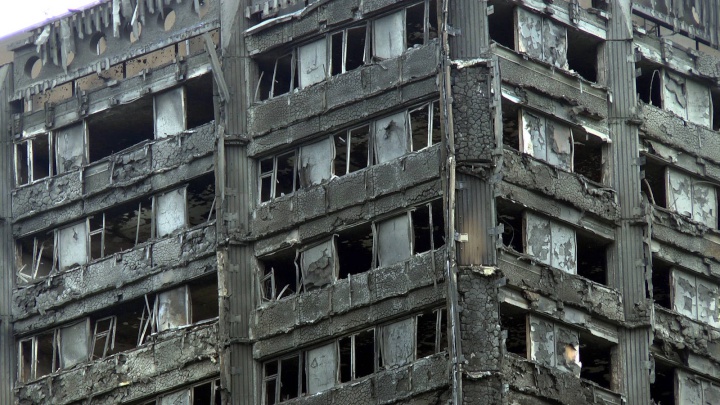Grenfell fire: study reveals materials' fire risk, toxic smoke
Phil Pennington, Reporter
The first in-depth study of building products that burned in the Grenfell Tower apartment block fire, which killed 72 people in London in mid-2017, has produced alarming results.

The flammability of the cladding used on the Grenfell Tower has shocked British researchers. Photo: ChiralJon on Flickr
The British research, published in the Journal of Hazardous Materials, showed the aluminium composite panel cladding on Grenfell was 55 times more flammable than the least flammable panels, and that the insulation behind it gave off smoke 15 times more toxic than less-flammable.
Researchers were also alarmed at how fiercely another high-rise cladding product, called high-pressure laminate or HPL, burns.

Fire
science professor
Richard Hull led the the
first
in-depth study of Grenfell Tower's
building
products. Photo: Supplied
Until now, mostly only generic information about the products used on Grenfell was available, largely from the manufacturers themselves relying on tests they had commissioned.
"The industry are well ahead of us in producing new products and there is no scientific study of what is currently on the market," Prof Hull told RNZ.
His team set fire to aluminium panels of the type on Grenfell, and to the polyisocyanurate - or PIR - foam insulation which is widely used globally.
The cladding ignited easily, with the heat rapidly liquefying the polyethylene inside it sending molten drips onto the PIR insulation and igniting that.
Burning 1kg of the PIR insulation "is sufficient to fill a 50m3 room with an incapacitating and ultimately lethal effluent", the study said.
"The insulation materials that have previously been marketed as safe in a fire ... actually can be ignited very easily just with a few drips of burning polythene," Professor Hull said.
"The two things actually interact together in a way that's worse than them burning individually."
Evidence at the Grenfell fire inquiry in Britain is that most victims were overcome by the smoke.
The new study shows hydrogen cyanide is in the smoke, and it incapacitates and asphyxiates much more rapidly than carbon monoxide.
NZ should follow UK government's example, professor says
As for high-pressure laminate, Prof Hull said it was not known how many tower blocks in Britain used it even though it could lead to another Grenfell-type fire.
"From the data we produced it would look as though it would be a very serious threat in a fire."
The British government has now said it would look into the use of the laminate, and Professor Hull said other countries such as New Zealand should do the same.
"It was quite remarkable in the UK that the government had no idea how many buildings had what kind of cladding. Also remarkable the fire brigade were taken aback by how combustible these buildings were."



 Peter Dunne: Luxon Gets Out His Butcher's Knife - Briefly
Peter Dunne: Luxon Gets Out His Butcher's Knife - Briefly Binoy Kampmark: Warring Against Encryption, Australia Is Coming For Your Communications
Binoy Kampmark: Warring Against Encryption, Australia Is Coming For Your Communications Gordon Campbell: On Fast Track Powers, Media Woes And The Tiktok Ban
Gordon Campbell: On Fast Track Powers, Media Woes And The Tiktok Ban Binoy Kampmark: Censorship Wars, Elon Musk, Safety Commissioners And Violent Content
Binoy Kampmark: Censorship Wars, Elon Musk, Safety Commissioners And Violent Content Gordon Campbell: On The Public Sector Carnage, And Misogyny As Terrorism
Gordon Campbell: On The Public Sector Carnage, And Misogyny As Terrorism Ramzy Baroud: NATO’s Never-ending War: The 75-Year-Old Bully Is Faltering
Ramzy Baroud: NATO’s Never-ending War: The 75-Year-Old Bully Is Faltering